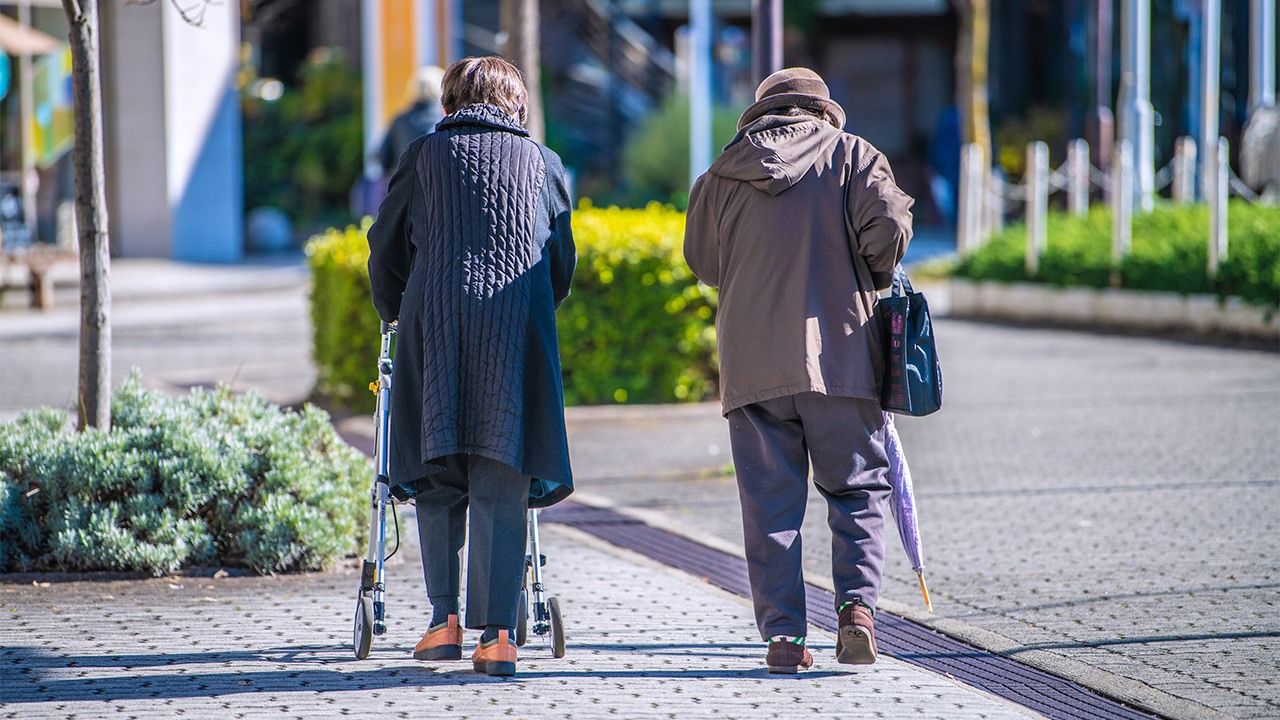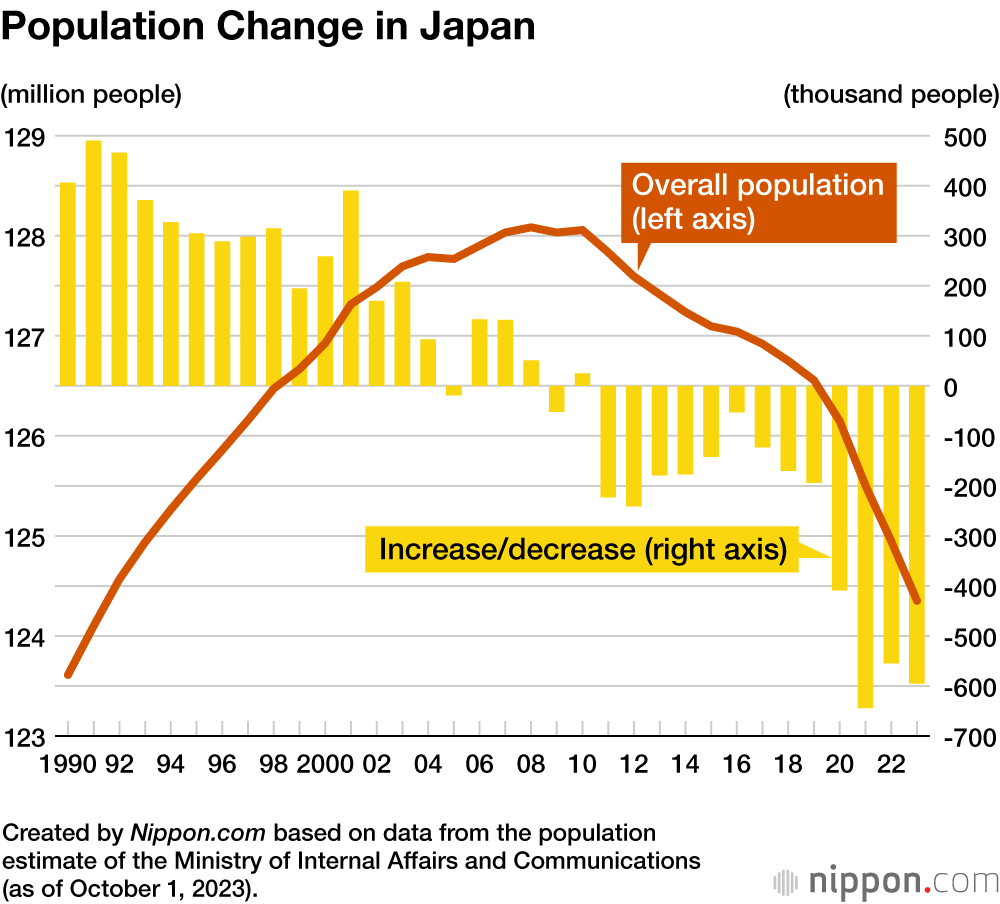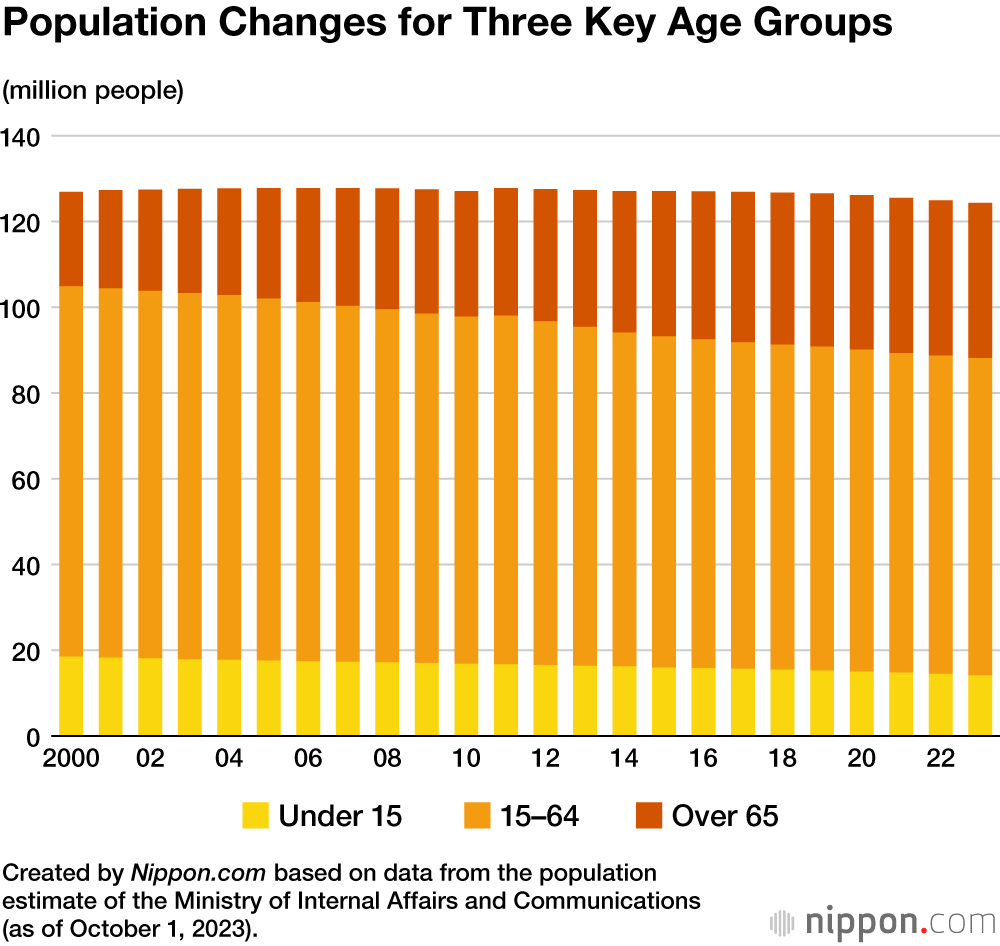
Japan’s Population Declines Again: Seniors 75 and Over Top 20 Million for First Time
Society- English
- 日本語
- 简体字
- 繁體字
- Français
- Español
- العربية
- Русский
An estimate published by Japan’s Ministry of Internal Affairs and Communications shows that the total population as of October 1, 2023, was 124,352,000. This was a drop of 595,000 (0.48%) from the previous year. It is the thirteenth consecutive year that the population decreased. The population of Japanese citizens was 121,193,000, for a record year-on-year decrease of 837,000, or 0.69%.
The natural population decline, calculated by subtracting births from deaths, reached a record high of 837,000, rising for the seventeenth year running. This decline was 414,000 for women and 423,000 for men. For the second straight year, there was a net increase in immigration, with 242,000 more people entering than leaving Japan.
By prefecture, the population only increased in Tokyo, with decreases in all the remaining 46 prefectures. The rate of population decline was more than 1% in 15 prefectures, including Akita (-1.75%), Aomori (-1.66%), and Iwate (-1.45%).
By age group, the working population, consisting of people aged 15 to 64, stood at 73,952,000; a year-on-year decrease of 256,000. The population 65 or older decreased by 9,000, to 36,227,000, marking the first year-on-year decrease since comparable records began in 1950. However, those 75 or older increased by 713,000, to 20,078,000, surpassing the 20-million mark for the first time. This age bracket now accounts for 55.4% of those aged 65 or older.
(Translated from Japanese. Banner photo © Pixta.)

